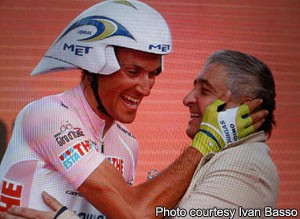Mapei boss has fond memories of late cycling coach
 Giorgio Squinzi, managing director of the Mapei chemical company since 1984, worked with recently deceased coach Aldo Sassi for many years, as the sponsor of the cycling team he coached and later as the owner of the sports institute I which he worked. In an interview with la Gazzetta dello Sport on the day of Sassi’s funeral, Squinzi explained why the man was so more than just an employee and colleague.
Giorgio Squinzi, managing director of the Mapei chemical company since 1984, worked with recently deceased coach Aldo Sassi for many years, as the sponsor of the cycling team he coached and later as the owner of the sports institute I which he worked. In an interview with la Gazzetta dello Sport on the day of Sassi’s funeral, Squinzi explained why the man was so more than just an employee and colleague.
“We first met at the time of Francesco Moser’s hour record in Mexico [in 1984],” he said. “At the end of 1993, 10 years after the historic wall of more than 50kph had been scaled. We at Mapei were creating the team, Sassi worked in the Enervit team, working on the scientific aspects of cycling.”
“We discovered that we were in tune with one another,” he explained. “We thought the exact same way about cycling, with the same strength and faith. Cycling as a passion, like love, especially that it’s the best sport because it’s the most human.”
As the Mapei team began to was becoming the most powerful in the sport, Squinzi decided to remove some of the more dubious aspects of the team. As a believer in clean cycling there was only one man he would turn to to coach his riders.
“Slowly, we stayed in touch,” he said. “Until the end of 1996, when I cleared out the Mapei athletes who were prepared by [notorious doctor] Michele Ferrari: [Tomy] Rominger, [Abraham] Olano and [Gianluca] Bortolami, I entrusted the preparation of the athletes and the direction of the research center to Sassi. We all believed that it was possible to not only ride cycling, but to be clean and successful.”
Unfortunately though, trying to run a clean team proved difficult in a sport ravaged by doping; Squinzi’s propensity for shooting comments from the hip brought him up against cycling’s Omerta and the team and its interests began to come under pressure.
“We did all we could do, while conditioned by the conduct of certain athletes and the International Cycling Union [UCI],” he said. “Then, however, our success made things intolerable. First, the mysterious positive of our Stefano Garzelli in 2002 [where he tested positive for a trace amount of Probenicid while in the leader’s jersey of the Giro d’Italia]. Then our unheeded complaint that in Spain, since 2001, they were doing strange things.
“Finally there were even threats against us; at that point, we could no longer remain in that world,” he added.
The team disanded at the end of 2002 (although much of the team and infrastructure went on to form Quick Step) but Squinzi continued to support the Mapei Sports Centre and its reputation grew, both in cycling and other sports.
“The Centre has even expanded to other disciplines,” said Squinzi. “From Marathon to winter sports, from golf to football, first with collaboration with Chelsea, then with the management of Sassuolo”
After what the centre has achieved over the years, Squinzi is proud of what he and Sassi have created. “Because our struggle for a clean cycling is proving to be the only way to salvation and success, credibility and rebirth,” he explained.
“Cadel Evans, was discovered by Sassi in mountain biking and passed over to the road, and never gone back; and to think that but for 5km of climbing – the last five in the 2002 Giro d’Italia – he has perfected an epoch-making undertaking: to win at the first attempt, in his freshman year, a beginner. But Evans has recovered over time.”
In recent years the Mapei name, along with Sassi’s, has become a byword for clean cycling, with many of the sports most controversial riders anxious to display that they have found salvation by aligning themselves with it. Some of the most high-profile doping sinners are returning to the sport via the Mapei Centre to prove how clean their comeback is. Other riders have either simply wanted to allay any suspicion, or to see if Sassi can do for them what he did for Evans.
“One for everyone: Ivan Basso.,” he said, “up to the latest disciples, from Damiano Cunego to Riccardo Riccò.
“Riccò is a big challenge,” he said of the rider whose return to the peloton was not greeted positively in many quarters. “’He has great qualities – Aldo told me – and if he believes it, he can do it.’ I hope that Riccò will put everything in, and according to the rules, to respect the memory of Sassi.”
Now that he has finally lost his battle with the brain tumour, Squinzi finds himself missing Sassi, “as a scientist, as a manager, and as a friend.”
He has however left a lasting legacy, which can continue to be built on in the future. “The research center at Castellanza is our pride,” Suinzi concluded. “Of course it will go on; Sassi has created a school, and soon we will announce an important addition.”